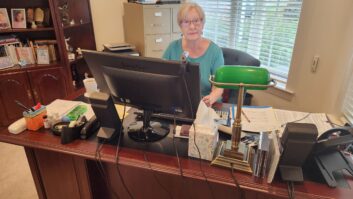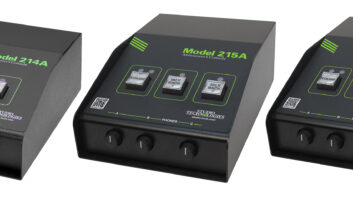The author is CTO for The Telos Alliance.
If you will permit me a metaphor about progress:
We study the past under a microscope,
We craft the present with precision,
But we forge the future with blunt hammers …
Right now, the broadcast industry is in the “blunt hammers” stage of forging the mold of how we will do broadcasting using cloud technologies. Note I said “technologies,” plural. Consider that “the cloud,” a term that seems to have been coined to be intentionally vague, means more than one thing.

At the most basic level, “the cloud” is simply the open-market commercialization of racks of computing hardware for hire, maintained and managed at an economy of scale with which no individual user company can compete by building server farms themselves.
SECURITY
Broadcasters already are taking advantage of the vast amounts of computation and data (file) storage for file transfer-based audio, playout systems and all manner of corporate data processing, scheduling and accounting. But I would draw attention to one additional resource offered by the cloud, potentially the most important one for broadcasting: high-bandwidth global fiber-optic data networks to be put into use more and more as the broadcast networks.
Broadcasting began using IP networks for web streaming audio over the internet two decades ago. But the high-bandwidth global fiber networks that are part of the cloud are of a higher quality and reliability than the internet, suitable for live professional audio, live broadcast contribution, remote production and delivery of final program.
It is true that availability to direct connect, or peer, to these networks is at present somewhat limited based on locations of points of presence. But more high-bandwidth backbone points of presence are being built as the demand for cloud access grows globally across all industries.
A lot of questions come up regarding security of the broadcast when using the cloud. Quite to the contrary, there is a growing consensus that the cloud facilities actually are more secure, more carefully managed and maintained, and stricter regarding network control and firewalls. Anyone wanting to build their own secure data center has a rather high bar to match what the professional cloud provides.
As the broadcast industry has borrowed technology from the IT industry, the way forward for security is to also borrow the best practices around security from the IT industry. The cloud providers are at the top of the IT security world. I predict that broadcast will benefit from working with them.
POTENTIAL
One way to think about taking advantage of the cloud, viewed as a high-quality facility, is to flip the way a studio typically is built on its head. Rather than a self-contained studio with local sources, which uses a network connection to deliver the final program, think of the core of the studio function being in the most secure place: the cloud data center.
[This Is Electric Broadcasts From the Cloud]
Highly connected to sources and playout servers (also in the cloud data center), if the connection for the voice of the host (one of the few distant connections) happened to be lost for whatever reason, the show can continue with backup automation (also connected via and running in the cloud). This is the “cloud” equivalent version of the Virtual Local Radio (ViLoR) project worked out by the BBC.
There are many other ways to think about restructuring how a live show is produced, but in this new cloud point of view, build it on the foundation of a highly network connected facility that is least likely to go offline.
At Telos, we first planted the seeds for this transition in handling broadcast audio programs in the late 1990s, when the first steps were taken to create professional audio over IP (AoIP). We created and brought to market Livewire, and in 2008 fostered the creation of the industry standard for AoIP, AES67. It is easy to lose sight of now, but we were intentionally following closely on the heels of the success of VoIP overturning traditional telephone networks.
Over the years, I have often asked my audiences the question, “What is the most important thing that AoIP connects to?” And my answer is “software.”
By using IT-friendly IP protocol for professional audio, we were opening the door to what has become possible today, to leverage and harness the massive power (and investments) of open-market commercial computing IT industry platforms and services, the so-called “cloud,” and the flexible, adaptable, software-based platforms they provide.
Keep this in mind: If professional broadcast audio was still stuck in physical XLR audio cables, AES/EBU digital transport, MADI and TDM switchers, this ability to leverage the cloud would be lost.












